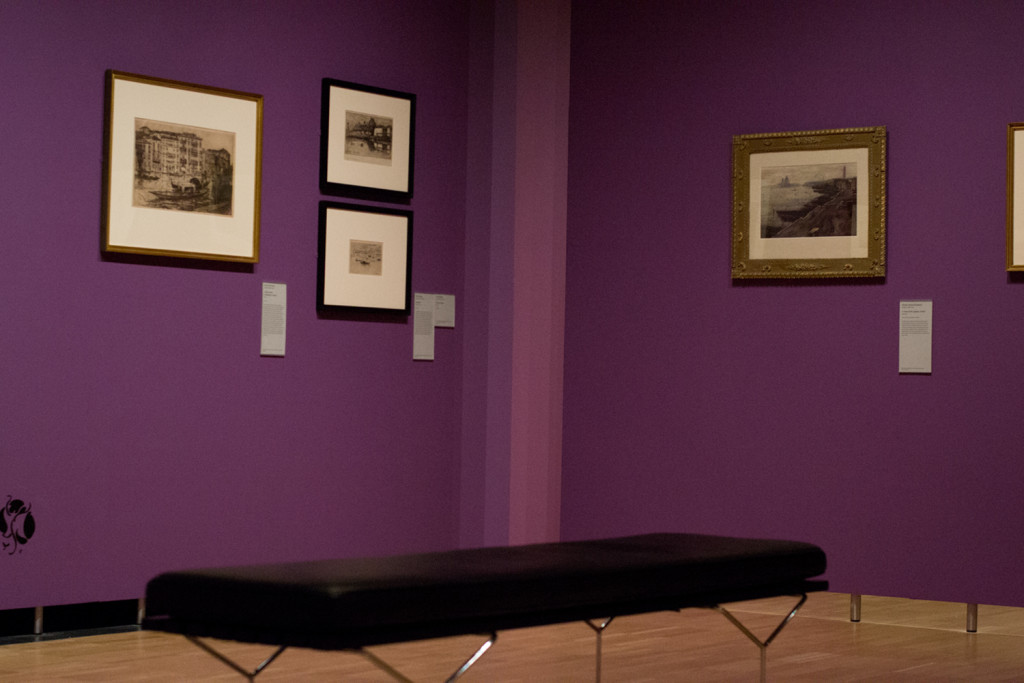A new exhibition at the Yale University Art Gallery looks to highlight the lesser-known works of an iconic American artist.
“Whistler in Paris, London, and Venice,” which opened last Friday at the YUAG, focuses on the artist James Whistler’s life and creative evolution, drawing particular attention to his numerous etchings. The exhibition features roughly 150 works that are primarily etches, but also contains a few lithographs and paintings. The entire show was assembled using the University’s collections, consisting of 100 objects from the YUAG’s permanent holdings and over a dozen works from the Yale Center for British Art. Curated by Heather Nolin, the Arthur Ross Collection Research Associate and project manager at the YUAG, the exhibition aims to provide further perspective and insight on Whistler’s life and talent.
“Almost everyone admires [Whistler] as a great artist, but people don’t have his true measure,” YUAG Chief Curator and Curator of European Art Laurence Kanter said.
While Whistler is often recognized for his paintings, the exhibition focuses largely on his etching, a skill that he learned during his time at the U.S. Coast Survey, a scientific organization that publishes work pertaining to hydrology, commerce and other fields. Etching is a method of printmaking that uses a metal plate containing a design marked by acid. The design transfers to paper, which creates the final print. The Whistler etchings featured in the exhibition range in subject matter from natural scenes and city landscapes to small children.
According to Nolin, the exhibition can help one understand the nuances of etching. She said she hopes that through this knowledge, visitors will gain an appreciation for etching as an artistic medium and see Whistler as both an etcher and a painter.
Nora Gallagher, a visitor to the YUAG, noted that through the featured etchings, she was able to learn a great deal about Whistler’s life and about the environment in which he lived.
The exhibition is organized in three parts — Paris, London and Venice — corresponding to the three cities where he spent the majority of his artistic career. Nolin noted that the three divisions coincide with three of his most interesting etchings: the French, Thames and Venice Sets.
The show presents Whistler’s life chronologically from his beginnings as a student in Paris, to Venice, where he tried to rebuild his reputation after going through bankruptcy.
“[The divisions] are used as jumping off point to explore his background and his relationships with artists, and how those relationships formed his art,” Nolin said.
In addition to the number of etchings, Nolin said, the exhibition stands out for its unique design. Christopher Sleboda, the YUAG’s director of graphic design, explained that the colors of the walls in different regions of the exhibit space correspond to the three featured cities.
Sleboda said he thinks that the show is unique in that it features primarily one artist. As a result, he noted, the gallery’s design could include aspects of Whistler’s personality in its layout. Sleboda added that he believes the design of the exhibition is also distinguishable for its inclusion of a large picture into the wall at the show’s entrance, which is rare for an art exhibition.
“He had quite an ego and was a character, so it was nice to have him front and center [in the title wall],” said Sleboda.
In addition to Whistler’s works, the exhibition showcases a few works of his contemporaries as well as some of his students. One wall features an etching of Whistler’s nephew made by Whistler’s brother-in-law, Francis Seymour Haden. The exhibition also displays a number of works of Mortimer Menpes, whom Whistler met during his time in London. The works of later American artists, such as William Merritt Chase and Childe Hassam, are also in the exhibit.
The exhibition will close on July 19.








